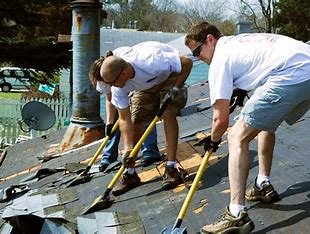Roof felt, often referred to as underlayment or roofing felt, is a crucial component in a roofing system. It serves as a protective layer between the roof deck and the shingles, providing essential functions such as waterproofing, insulation, and ventilation. In this article, we will delve into the world of roof felt, exploring its types, applications, installation process, and maintenance tips.
Types of Roof Felt
There are primarily two main types of roof felt: organic felt and synthetic felt.
Organic Felt
Composition: Made from recycled paper or cardboard fibers saturated with asphalt and bitumen.
Characteristics: Known for its affordability and breathability, allowing moisture to escape from the roof deck. However, organic felt is susceptible to rot and mold if not properly installed or maintained.
Applications: Commonly used in residential roofing systems, especially in areas with moderate climates.
Synthetic Felt
Composition: Manufactured from polyester or polypropylene fibers coated with asphalt.
Characteristics: Highly durable, resistant to rot, mold, and mildew. Synthetic felt offers superior waterproofing properties and is often preferred in harsh weather conditions.
Applications: Widely used in both residential and commercial roofing, particularly in coastal areas and regions with extreme temperature fluctuations.
Applications of Roof Felt
Roofing felt plays a vital role in various roofing applications:
New Construction: As an underlayment for asphalt shingles, tiles, or metal roofing.
Re-roofing Projects: Replacing worn-out or damaged felt during a roof renovation.
Roof Repairs: Repairing leaks or damage to the felt layer.
Insulation: Providing additional insulation to the roofing space, especially in colder climates.
Installation of Roof Felt
The installation of roofing felt is a crucial step in roofing construction. It necessitates meticulous planning and following the right procedures:
Roof Deck Preparation: Ensure the roof deck is clean, dry, and free from any debris or defects.
Felt Placement: Start from the bottom of the roof and lay the felt strips horizontally, overlapping the edges by at least 2 inches.
Fastening: Secure the felt to the roof deck using roofing nails or staples.
Shingle Installation: Apply the shingles over the felt layer, ensuring proper alignment and overlap.
Maintenance and Longevity
Proper maintenance is essential to prolong the lifespan of roofing felt:
Regular Inspections: Conduct periodic inspections to check for signs of damage, such as tears, punctures, or water penetration.
Cleanliness: Remove any debris, leaves, or other obstructions that may accumulate on the roof and felt.
Ventilation: Ensure adequate ventilation in the attic space to prevent moisture buildup and condensation.
Professional Maintenance: Consider hiring a qualified roofing contractor for regular maintenance and repairs.
Environmental Considerations
In recent years, there has been a growing emphasis on environmentally friendly building materials. roofing felt is no exception. While traditional organic felt has a lower environmental impact due to its use of recycled materials, synthetic felt options are also becoming more sustainable. Some manufacturers offer recycled content in their synthetic felt products, reducing the demand for virgin materials. Additionally, advancements in manufacturing processes have led to the development of felt products with improved energy efficiency and reduced emissions.
Regional Variations and Climate Factors
The choice of roofing felt can be influenced by regional climate conditions. In areas with heavy snowfall, a thicker and more durable felt is recommended to withstand the weight and potential damage caused by ice dams. In coastal regions, where exposure to saltwater and humidity is high, felt products with enhanced resistance to moisture and corrosion are essential. Similarly, in regions with extreme temperature fluctuations, a felt that can withstand both hot and cold conditions is crucial.
Code Compliance and Building Regulations
It’s important to ensure that the roofing felt you choose complies with local building codes and regulations. These codes may specify minimum requirements for felt thickness, type, and installation methods. Consulting with a local building inspector or roofing contractor can help you understand and comply with these regulations.
Aesthetic Considerations
While roofing felt is typically hidden beneath the shingles or other roofing materials, it can still impact the overall appearance of your roof. Some felt products may have a visible texture or color, which can be taken into account when selecting a roofing material. Additionally, the method of shingle installation can influence the visibility of the felt.
Future Trends in Roof Felt
The roofing industry is constantly evolving, and new innovations are emerging in the field of roof felt. Some potential trends include:
Advanced Waterproofing Technologies: The development of felt products with even more robust waterproofing capabilities, capable of withstanding extreme weather conditions and preventing leaks.
Enhanced Insulation Properties: The integration of insulation materials directly into the felt layer, providing improved energy efficiency and reducing heating and cooling costs.
Common Questions About Roof Felt
How often should roof felt be replaced?
The lifespan of roofing felt varies depending on factors such as the type of felt, climate, and maintenance practices. However, it typically lasts between 15 and 20 years.
Can I install roof felt myself?
While it’s possible to install roofing felt on your own, it requires proper knowledge and skills. It’s better to speak with a qualified roofing contractor if you’re not sure.
What is the difference between organic and synthetic felt?
Organic felt is made from recycled materials and is more affordable, while synthetic felt is manufactured from synthetic fibers and offers superior durability and waterproofing.
Is roof felt necessary for all types of roofing?
Yes, roofing felt is generally considered a essential component in most roofing systems, providing protection against moisture, insulation, and ventilation.
Can I use roof felt as a waterproofing layer for a flat roof?
While roof felt can be used on flat roofs, it’s often not sufficient for complete waterproofing. Other measures, such as drainage systems and specialized waterproofing membranes, may be required.
In conclusion, roofing felt plays a vital role in the performance and longevity of a roofing system. By understanding the different types of roof felt, their applications, and proper installation and maintenance practices, you can ensure that your roof remains protected and durable for years to come.
To read more, click here.

Leave a Reply